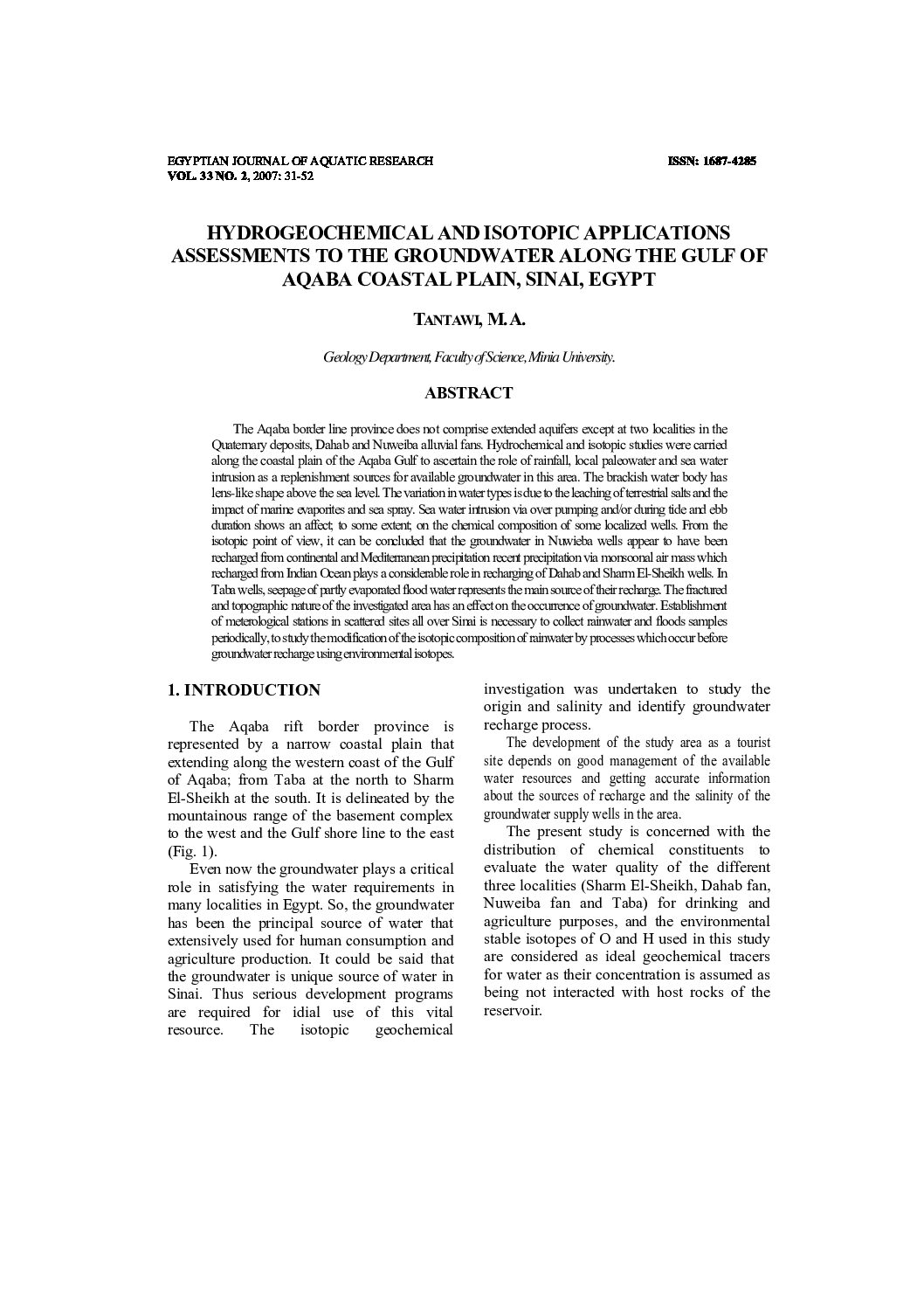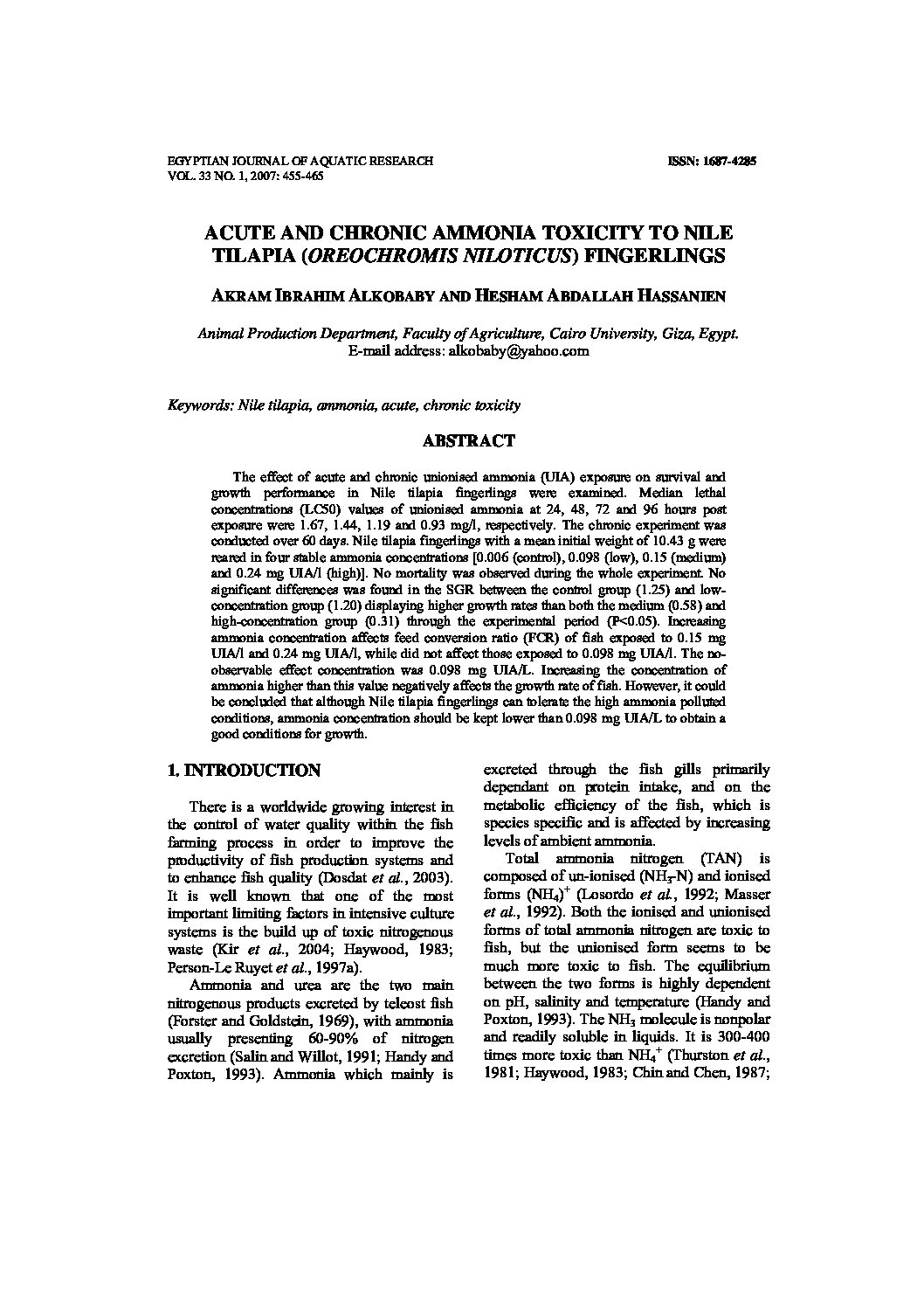Categories
vol-33HYDROGEOCHEMICAL AND ISOTOPIC APPLICATIONS
ASSESSMENTS TO THE GROUNDWATER ALONG THE GULF OF
AQABA COASTAL PLAIN, SINAI, EGYPT
TANTAWI, M.A.
Geology Department, Faculty of Science, Minia University.
ABSTRACT
The Aqaba border line province does not comprise extended aquifers except at two localities in the
Quaternary deposits, Dahab and Nuweiba alluvial fans. Hydrochemical and isotopic studies were carried
along the coastal plain of the Aqaba Gulf to ascertain the role of rainfall, local paleowater and sea water
intrusion as a replenishment sources for available groundwater in this area. The brackish water body has
lens-like shape above the sea level. The variation in water types is due to the leaching of terrestrial salts and the
impact of marine evaporites and sea spray. Sea water intrusion via over pumping and/or during tide and ebb
duration shows an affect; to some extent; on the chemical composition of some localized wells. From the
isotopic point of view, it can be concluded that the groundwater in Nuwieba wells appear to have been
recharged from continental and Mediterranean precipitation recent precipitation via monsoonal air mass which
recharged from Indian Ocean plays a considerable role in recharging of Dahab and Sharm El-Sheikh wells. In
Taba wells, seepage of partly evaporated flood water represents the main source of their recharge. The fractured
and topographic nature of the investigated area has an effect on the occurrence of groundwater. Establishment
of meterological stations in scattered sites all over Sinai is necessary to collect rainwater and floods samples
periodically, to study the modification of the isotopic composition of rainwater by processes which occur before
groundwater recharge using environmental isotopes.







